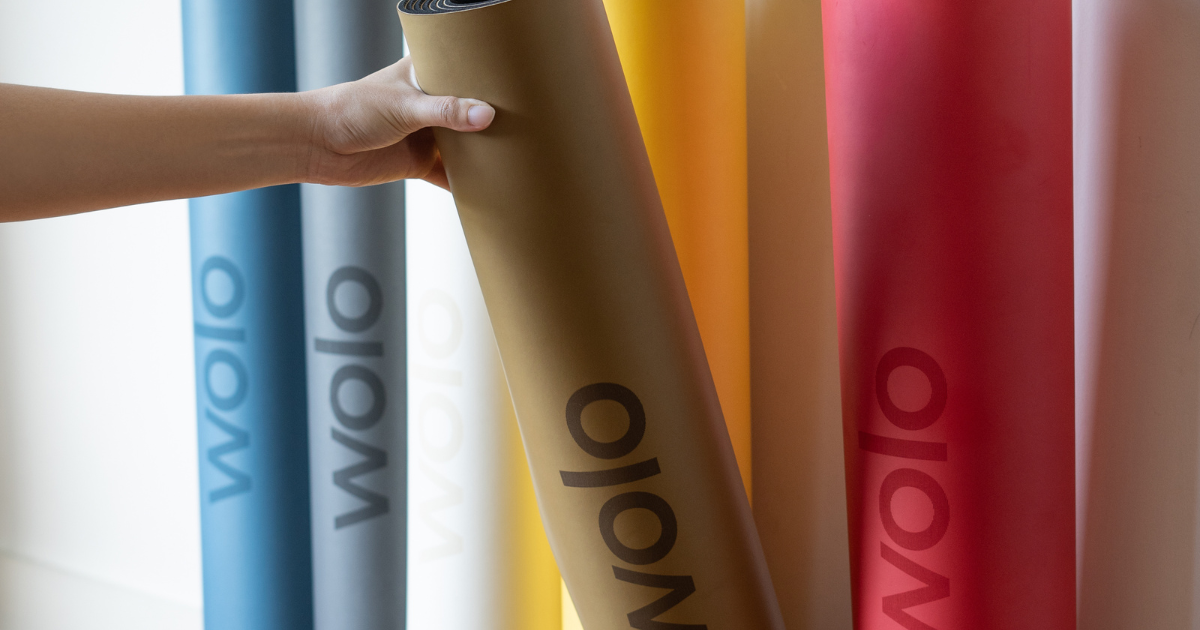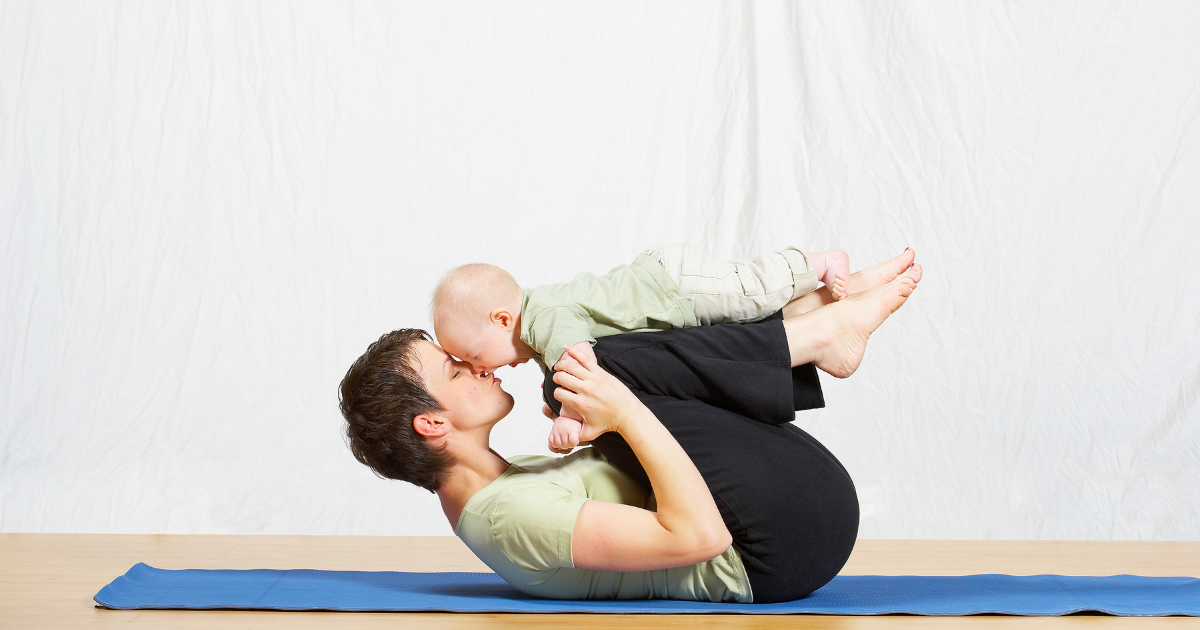Choosing the right yoga mat is more than just picking your favorite color; it's about finding a comfortable mat that supports your yoga journey. A good mat enhances your practice and encourages consistency.
In this guide, we will show you how to choose a yoga mat that fits you and discuss all the things you should consider before buying one.
1. Consider the yoga mat thickness
The thickness is one of the first things to consider when choosing a yoga mat. Your choice of thickness will ultimately depend on your personal preference and the types of yoga classes you attend.

Thicker mats, generally around 4mm to 6mm, offer more cushioning, which is ideal for restorative yoga or any practice involving many seated or lying poses. The extra padding can help protect your joints and provide comfort during long meditations.
While a thick yoga mat can be great for cushioning, you may sacrifice stability in certain poses. If you're into styles of yoga that involve more standing poses, you might want to opt for a standard thickness of around 3mm to 4mm to ensure better balance and stability.
On the other hand, a travel yoga mat - typically thinner at around 1.5mm - might be the best choice for those who travel often because of its lighter weight.
2. Select yoga mat materials

The material of your yoga mat can greatly impact its grip, durability, and comfort. The most common materials are PVC, TPE, natural rubber, and cork. In addition to performance, they also vary in cost and sustainability.
Polyvinyl Chloride (PVC)
Polyvinyl Chloride (PVC) mats are known for their durability and low cost. They are very common and can accommodate a wide range of yoga practices and exercises.
However, they are not biodegradable and can contain phthalates, which are harmful to both health and the environment.
Thermoplastic Elastomer (TPE)
TPE mats are a newer option on the market. They offer a blend of plastic and rubber that provides durability and cushioning. They are often considered more eco-friendly than traditional PVC mats and are free from latex, making them a good choice for individuals with latex allergies. TPE mats are lightweight and provide a decent grip. However, they lose their grip when your palms sweat as they are not water-absorbent.
Natural Rubber
Natural rubber yoga mats are a sustainable option that provides a high level of grip even when you sweat, making them a favorite among many yogis. They are made from the sap of rubber trees and are biodegradable. These mats often offer excellent support and durability for a variety of yoga practices. Be cautious if you have latex allergies, as natural rubber mats contain latex, which might trigger allergic reactions.
Cork
Cork yoga mats are eco-friendly and known for their natural grip. They provide a smooth surface that becomes even grippier when wet, making them ideal for hot yoga or any practice that involves a lot of sweating. However, some people might not enjoy the texture, and may be hard to clean after use.
3. Evaluate size and portability
Having the right size mat is essential for a comfortable yoga practice. A mat that's too small can restrict your movement and make certain poses challenging. The standard yoga mat size is 173cm long and 61cm wide.
Some mats, like the Mastery Yoga Mat and Away Travel Mat, are designed to be larger than the standard size, at 183cm long and 68cm wide. These larger mats give you plenty of space to move around, but they are not too large, which makes them difficult to carry.
Portability is another key factor, especially if you travel often or attend yoga classes outside your home. Lightweight mats or those that come with a yoga bag can make transportation much easier.
There will always be tradeoffs: Thicker and larger mats are heavier and less portable; thinner and smaller mats are lighter and more portable. So it’s essential to understand your own needs when choosing a yoga mat.
4. Learn about yoga mat care
Care and maintenance could vary depending on the yoga mat you choose. To make the right purchase, make sure you find and read the care guide when shopping for a mat.

Regardless of the mat, regular maintenance of your yoga mat is essential to ensure its longevity and performance. For daily upkeep, a quick wipe with a damp cloth after each use can remove sweat and oils that degrade mat materials over time. Ensure the mat is completely dry before rolling it up to prevent mold and odors.
5. Pair your mats with yoga props
To maximize comfort, support, and versatility, consider pairing your mat with a variety of accessories and props. These tools can help improve alignment, deepen stretches, and offer additional stability.
Yoga Straps
Yoga straps are essential for beginners and seasoned yogis alike. They act as an extension of your arms to deepen stretches and improve flexibility. They come in handy for poses that require a bit more reach than what you currently have, ensuring you maintain proper alignment and posture without straining.
Yoga Blocks

Yoga blocks serve as supportive props for your practice, making challenging poses more accessible and comfortable, especially for beginners. They help maintain balance and alignment and ensure you get the most out of each pose without overexertion. Blocks are commonly made from foam, cork, or wood—each material offers different levels of support and stability.
Yoga Bag
A yoga bag is a practical accessory for carrying your mat and gear. Look for a bag with sufficient space, durability, and ease of access. Some bags come equipped with additional pockets for personal items and separate compartments for wet clothes or towels, making them ideal for those who practice in a studio or outdoors.
Yoga Towel
Yoga towels are designed to lay over your mat, providing a hygienic barrier that helps to absorb sweat and improve grip during intensive sessions. This is especially useful in hot yoga classes where slipping can be a concern.
Frequently asked questions
What is the best thickness for a yoga mat?
The best thickness for a yoga mat often depends on the styles of yoga you practice and your personal comfort needs. A standard thickness is about 4 to 5mm, offering a solid balance of support and stability for standing poses.
Which yoga mat material is best for beginners?
For beginners, PVC mats are a popular choice due to their low cost and durability. TPE mats offer an eco-friendly alternative with similar performance. Natural rubber mats are excellent for most kinds of yoga with their grip and sweat absorption properties. When choosing your mat, consider the style of yoga you practice, your budget, and any environmental concerns.
What should I consider when buying a yoga mat?
When purchasing a yoga mat, consider its material, thickness, texture, and size. The mat's material affects its grip, cushioning, and eco-friendliness. Thickness impacts comfort, especially for those with joint sensitivities. Texture and stickiness contribute to your stability during poses, and size should accommodate your height and the space you occupy while practicing.
How often should I replace my yoga mat?
The lifespan of your yoga mat depends on the quality of its material, how often you practice, and how well you care for it. Signs that it's time for a new mat include noticeable wear, reduced grip, and diminished cushioning for your joints. Frequent travelers might prefer having separate mats for home and travel, with travel mats being thinner and more portable. Regular cleaning and proper storage can extend the life of your mat, delaying the need for a replacement.
Make your selection
Choosing the right yoga mat is essential for your practice. A good first step is to check out what your yoga instructor recommends, but remember, the final choice is yours.
While you are here, take a moment to check out what we have to offer. Our natural rubber yoga mats offer exceptional grip and anti-slip features, ensuring you stay grounded and secure in every pose.
They are available in two thicknesses, catering to your specific needs. Choose the Mastery Mat for everyday use or opt for the lightweight and easy-to-carry Away Travel Mat. Invest in a mat that supports your balance, flexibility, and mindfulness journey today.





